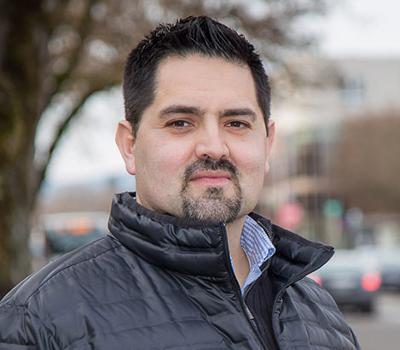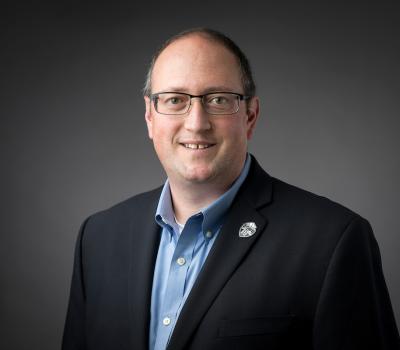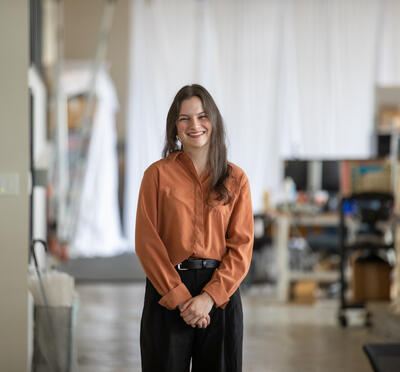The chief counsel of the Federal Motor Carrier Safety Administration, Melody Drummond Hansen, met on campus with transportation experts from the College of Engineering in October.
During the visit, Drummond Hanson and several colleagues learned about Oregon State research aimed at improving road safety. They also exchanged ideas with faculty researchers David Hurwitz, professor of transportation engineering and director of the Kiewit Center, and Sal Hernandez, associate professor of civil engineering, whose research interests include heavy vehicle safety.
What role does the FMCSA play?
The FMCSA, a component of the Department of Transportation, is responsible for regulating and providing safety oversight for commercial motor vehicles. Its mission includes developing and enforcing regulations to reduce crashes, injuries, and fatalities involving large trucks and buses.
“Research is a critical part of how agencies like FMCSA make decisions,” Drummond Hansen said. “Our Oregon Division previously worked with Oregon State researchers and made us aware of the great research related to commercial motor vehicles that’s being done here.”
Hurwitz’s research involves several areas related to commercial motor vehicle safety, including traffic control, driver behavior, statistical modeling of crash outcomes, optimizing safety protocols, and understanding driver behavior and how it contributes to failures.
“FMCSA has a national research program,” Hurwitz said, “So, we’re hopeful that some of our skills and expertise will overlap with the programs they manage. Hopefully, we can partner with the agency on research initiatives and generate meaningful outcomes that increase safety.”
The impact of Oregon State's Driving and Bicycling Simulator
While touring the Driving and Bicycling Simulator, which is directed by Hurwitz, Drummond Hansen got behind the wheel of the commercial truck simulator and took it for a spin through a virtual section of Bend, Oregon.
“Seeing and experiencing such high-level technology focused on transportation safety — as well as all of the many other research activities — was impressive,” Drummond Hansen said. “It got me thinking about all of the ways that it could be useful for concerns like vehicle design, regulatory considerations, and community planning — and, of course, it’s an excellent training ground for students. The depth of knowledge and dedication of the students I interacted with during the visit were clearly evident.”
Hurwitz added that agencies like FMCSA are constantly looking for talented graduates to add to their ranks, so opportunities to collaborate with the agency offer an ideal chance to get noticed.
“The width and breadth of the expertise of the people from FMCSA who spent time with us is significant,” Hurwitz said. “The fact that we had the chance to talk with them about the leading edge of safety issues and policies through the lens of a federal agency helps us consider how we can leverage our people and our tools to contribute to pressing matters of traffic safety.”





